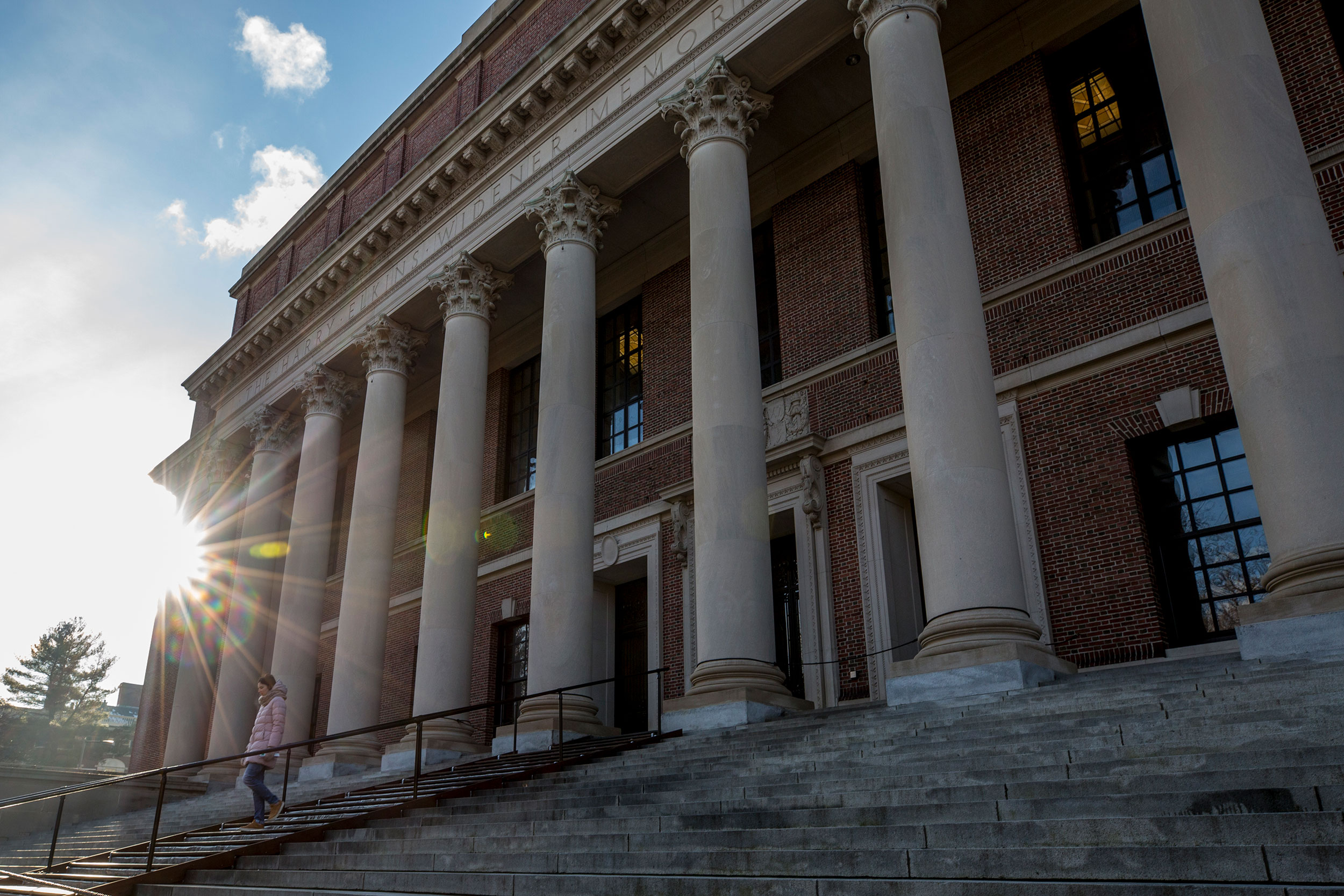
More than half of Harvard students receive financial aid. The College expects to spend more than $195 million on aid next year.
Rose Lincoln/Harvard Staff Photographer
Behind the numbers, a deep personal dimension to financial aid
College stories illuminate Harvard’s far-reaching commitment to helping students thrive
Since the Harvard Financial Aid Initiative (HFAI) launched in 2005, the College has awarded more than $1.8 billion in need-based grants, making a Harvard education available to all admitted students regardless of financial circumstances. While that’s a striking statistic, the stories shared by the students behind the stats are even more impressive.
For Waltham native Haley Catherine Curtin ’18, acceptance into Harvard College was a lifelong dream. Her father used to take her to the Hockey East Tournament when she was a child. She recalls him teasing her one year as they watched the Harvard women’s hockey team compete.
“Which team am I going to be watching you play for?” he said.
Curtin did not hesitate. “Harvard, obviously!”
“Getting in is not as simple as my first-grade self thought it was,” Curtin, who now participates in Harvard Club Hockey, said with a laugh. “But I kept it as my goal, and in high school I was motivated.”
While Curtin was pressed in high school to work hard, study, and focus on getting into Harvard, no one, including her counselors, ever talked about college affordability or financial aid opportunities. It was only after she applied that she learned about Harvard’s generous need-based financial aid program.
“As seniors we were never expected or encouraged to think about the cost of a higher education, and in retrospect, that is something of a missed opportunity,” she said. “Harvard is so unique in providing the financial aid that it does, but we need to further open up the doors to have the important conversation about how much a college education costs.”
At Harvard, more than half of students receive financial aid, and for 70 percent of supported students, the grant covers the full cost of tuition. For the 2018‒2019 academic year, the cost to attend the College will be $67,580, including $46,340 for tuition, a 3 percent increase from 2017‒2018, maintaining Harvard’s standing as one of the least expensive schools in the Ivy League. Harvard continues to meet the full need for undergraduates and expects that it will spend more than $195 million on aid next year. Need-based scholarship aid has increased by 80 percent over the past decade, reinforcing Harvard’s commitment to affordable education.
“Harvard’s industry-leading financial aid program makes it possible for admitted students from across the globe to take full advantage of the vast array of academic and extracurricular opportunities here on campus,” said Sally C. Donahue, Griffin Director of Financial Aid for Harvard College. “Keeping our doors open to all talented students, regardless of their economic backgrounds, is the foundation of Harvard’s excellence.”
The majority of undergrads receiving financial aid pay just 10 percent of the family’s annual income, with the average net cost to parents about $12,000 a year. One in five Harvard undergraduates comes from a family earning less than $65,000 a year, and their families pay nothing toward the cost of their education.
These students also receive a $2,000 start-up grant that helps with move-in costs and other expenses related to the College transition. Since the start-up program launched in 2016, Harvard has awarded nearly $690,000 in grants. The funding can be used in a number of different ways, including for book and computer purchases and setting up dorm rooms.
Harvard’s far-reaching commitment to ensuring that all students can take full advantage of their College experience includes more than $6 million in additional funding annually to financial-aid students, supporting everything from new winter coats to music lessons to studying abroad to public service internships to research experiences in a lab.
Curtin, a religion concentrator, has made the most of her experience at Harvard. She spent a year working for Nazareth Farm, a Catholic community in rural West Virginia that transforms lives through a service-retreat experience. There, she spent her time helping raise crops, talking to neighbors about food sustainability, and addressing substandard housing by helping with repairs. After graduation she’ll join AmeriCorps, with a post at a high school in South Dakota.
While her time at Harvard has been thoroughly enriched by academics and sports, it’s been equally affected by financial aid — and the office charged with providing it.
“A huge part of my experience at Harvard has been the strong relationship I have built with my financial aid officer,” said Curtin. “We are on a first-name basis — and they have been there through it all. The personal dimension of my financial aid experience is the biggest impact and something I am super grateful for.”




